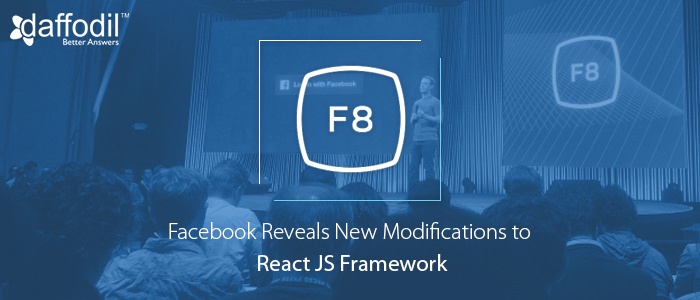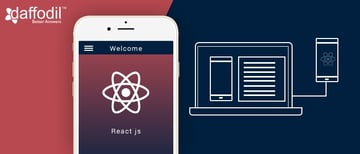
It is no rocket science that anything that Facebook does with its products makes a difference to everyone, especially marketers and developers. Now it doesn’t matter whether it is introducing a new product, acquiring one, or modifying something from its current portfolio of products. And the perfect place to get the scoop of what the social media giant has been up to and what is in the pipeline is Facebook’s annual F8 developer conference.
The event took place a few days ago in San Jose and had an audience of software developers from all over the world. One of the biggest reveals of this year’s conference was the modification of its React framework, a prevalent JavaScript library used to build user interfaces. In a big step forward, Facebook released the React VR framework that will enable developers to build VR content and experiences quickly using only JavaScript. With the launch of React VR, Facebook has reminded us that although it’s exploring augmented reality, it hasn’t overlooked the promising world of virtual reality.
Rewriting the React Framework for Enhanced User Experience
React VR uses the same design as its predecessor, the existing React JS framework. This means that just like developers use React JS for standard web application, VR developers will be able to host and access 360-degree-experience apps on the web without the help of separate software. Think about it, all you would have to do is type a web address, put on your Vive, Rift, Daydream, or Gear, and find yourself, quite quickly, in a virtual world. React VR is supposed to be as simple as that.
Predictably, the new React VR framework uses already existing APIs such as WebVR and WebGL to power 360-degree experiences and also to network with the different sensors in them. It’s imperative to realize that the focus of React VR is not on building immersive and complex VR apps or games, but to accommodate a seamless experience sans the need for additional data downloads. It will allow developers to add 3-D models and combine 360-degree scenes with 2-D images, texts, and user interfaces.
It is safe to say that if you have experience building React apps, you will be able to create React VR apps easily while getting the best of the various existing tools under the umbrella of React.
More Updates for Developers from the F8 Conference
1. AR all the way
Mark Zuckerberg revealed the closed beta of camera effects platform, a brand new platform focusing on augmented reality. This platform will allow developers to create masks and effects on the Facebook camera. Another step towards the world of AR was the announcement of the social media giant’s plans to develop augmented reality games that would define completely new genres of games and make physical and digital reality better.
2. Launch of Caffe2
A deep learning open source framework, Caffe2 was launched at the F8 conference. It will support industrial-strength applications with mobile as its primary focus. The introduction of Caffe2 is an addition to the company’s contribution to the PyTorch framework of deep learning, which was conceived by the Facebook Artificial Intelligence Research (FAIR) group.
3. More bots in Messenger
Facebook’s Messenger app got a major uplift after the company opened the platform to developers last year. The new Messenger has a “Discover” tab on the homescreen to let you find the bot you are looking for in a more intuitive way. The number of bots have gone up to 100,000 from 33,000 in the last few months. The application has also got M, the new AI assistant that will provide assistance on a number of topics being discussed in a group or chat window.
4. A new software development kit to capture VR
Developers can now integrate Facebook’s new software development kit (SDK) into their applications to let users capture a 360-degree experience in their photos and videos. The file can be shared through a VR headset or on Facebook’s News Feed. This SDK uses cube mapping to produce a high-quality format apt for the world of VR.


-1.png?width=360&height=154&name=health-care-blog-17-4-27%20(3)-1.png)
